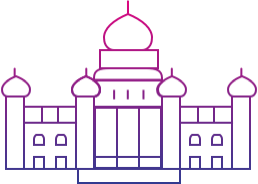Jan 30, 2018
Until 2008, India emerged into an IT outsourcing hub bagging many multi-national contracts. The Indian IT industry reaped most benefits out of the IT outsourcing bubble. In 2008, popular technology and business blogs heralded the message surrounding the death of IT outsourcing industry in India. Was this bad news? Interestingly, it was not as gloomy as it sounded.
Though IT outsourcing industry was approaching a trough, another sector was reaching out to a crest. A new opportunity was making room for itself and was called Software as a Service, also known by its acronym SaaS. SaaS became a global trend that manifested itself in fullness a little later in India.
The concern that threatened IT outsourcing companies in India was, ‘if SaaS would supersede their business model’. When companies started opting in for SaaS as a solution, traditional outsourcing companies felt the impact. However, what it turned out to be was that SaaS helped the traditional outsourcing companies to adopt it for the same reasons as any other independent company.
Businesses started migrating to SaaS. This did not handicap outsourcing companies as they also adopted SaaS for their own survival, enjoying the same cost and hardware benefits as the rest.
How did Saas grow?
Cost is what attracts outsourcing as an option and now it is SaaS that has mastered the low cost art.
Som Mittal, former president of Nasscom said, “There is work that still happens on FTE basis. More and more companies are shifting their focus from FTE and SLAs to outcomes. Large customers in the last few years are saying, “You’ve done what we have told you to do. Please tell us what more can you do for us?” Such pressure from customers welcomed SaaS with innovative models. From flexible pricing models, reduced dependency on infrastructure maintenance to increased partner and developer networks, SaaS brought in all benefits a business could have in an outsourced model.
Due to growing scalability and flexibility needs, adoption rate of SaaS by CIOs grew by over 40% in 2012 and 2013. Though it revealed its potential to the markets, challenges surrounding implementation, integration and customization still kept this market open to opportunities. SaaS has seen new products, solutions, applications and communities growing to create an ecosystem. It has also experienced a few problems that paved way to newer bubbles.
What’s next, after SaaS?
SaaS based Business Intelligence (BI) is one such bulb, born with the action. After Saas, companies like Microsoft foresee the emergence of Software + Service (S+S). S+S combines software from desktop PCs, enterprise computing, the Web and devices while maintaining a rich client experience through various services. What this means is that service providers will not only have to deliver software as a service, but also create integrated experiences and complete business solutions that customers are seeking, to secure long term relationships with their customers.
While this looks like the evolution of Saas itself, there is another bubble conjoining SaaS and would create its own environment — this new bubble is ‘big data applications’. Investments are pouring in as, investors bet to find answers to complicated marketing challenges through big data. We need to need to wait and watch when the next convergence would happen.
 Blogs
Blogs









